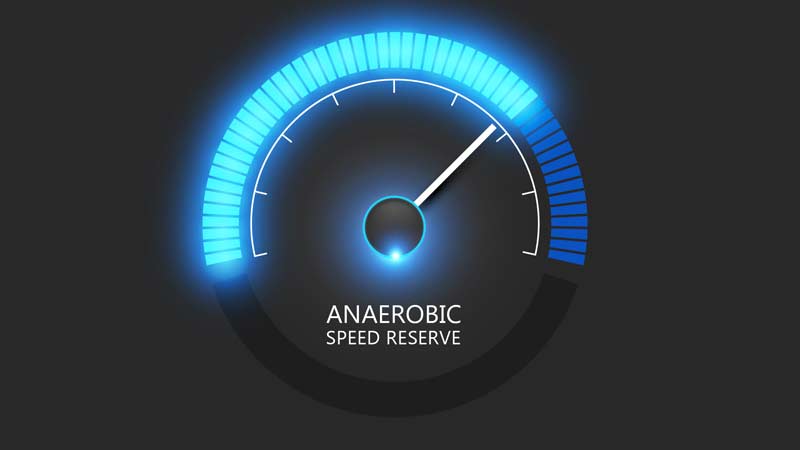
The concept of anaerobic speed reserve, or ASR, is a relatively new concept to the sport of running. ASR is defined as the difference between an athlete’s absolute maximum speed and his or her maximum aerobic speed. As we know the energy systems used for a sprint event 400m or less is much different from an endurance event longer than 400m. The difference largely determines the success a specialized athlete may have at various events above or below the anaerobic threshold. The importance behind the ASR is simply that faster top-end speeds precede faster sub-maximal aerobic speed. Interestingly, elite sprinters achieve racing speeds that are twice as fast as elite milers, but marathoners race only moderately slower than milers (Bundle, Hoyt, & Weyland, 2003). The disparity lies in the metabolic power available from an anaerobic source in these faster athletes (Bundle et al., 2003). Knowledge of the top-end speed and the maximum aerobic speed can thus aid in predicting performance at any event duration between 3 and 240s with the use of the following ASR model (Bundle et al., 2003).
Bundle et al. (2003) developed an algorithm used to calculate speed over a given duration:
Spd(t) = Spdaer + (Spdan – Spdaer) * e-kt
The ASR is represented as (Spdan – Spdaer) in the above equation. The decrement in speed that occurs with increments in run duration is represented by k and run duration is solved for t with a given speed. The 2003 study was able to predict speeds within 2.5% and 3.4% of actual speeds for treadmill and track running, respectively (Bundle et al., 2003). The accuracy of the predictions was attributed to the directly proportional decrement in speed relative to the decrement in anaerobic speed reserve. Moreover, fractions of the anaerobic speed reserve are indicative of relative exercise intensity for intervals between 3 and 240s (Bundle et al., 2003).
Another study by Dardouri et al. (2014) investigated the use of ASR as a predictor of repeated sprint performance. Their findings indicated that higher ASR values were highly correlated with both improved total time and peak time in repeated sprint ability (Dardouri et al. 2014). This study proposed the use of ASR in predicting the upper performance limits of both anaerobic and aerobic power for multi-sprint event athletes (Dardouri et al. 2014).
The implications of this information from a coaching perspective are particularly useful when stacking athletes in the best-fit events based on their strengths. Without ever racing an athlete in the 200m or 400m, a 100m sprinter can be evaluated for success in either of these events, simply based on a measurement of maximum speed in practice trials. The ASR is also a useful tool to gauge which athletes need to improve top-end speed versus sub-maximal speed, in order to best succeed in his or her respective event. Faster top-end speeds precede faster sub-maximal aerobic speed; developing a distance runner’s top end speed and anaerobic speed reserve helps to develop sub-maximal power simultaneously, which is counterintuitive to what many long-distance coaches still teach today.
References
Bundle, M. W., Hoyt, R. W., & Weyland, P. G. (2003). High-speed running performance: a new approach to assessment and prediction. Journal of Applied Physiology, 95, 1955-1962.
Dardouri, W., Selmi, M. A., Sassi, R. H., Gharbi, Z., Rebhi, A., Yahmed, M. H., & Moalla, W. (2014). Relationship between repeated sprint performance and both aerobic and anaerobic fitness. Journal of Human Kinetics, 40, 139-148.
[mashshare]
